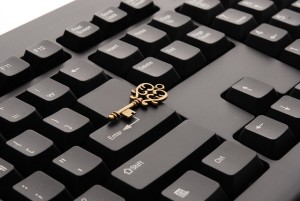
JeongGuHyeok / Pixabay
During the repair process of a PC, you must pay special attention to the motherboard as it is undoubtedly one of the main components of a PC. It is where computer components are connected to both power and data, and the various expansion slots.
If any of these components presents problems undoubtedly the entire operation of the computer is affected, then I would explain how to solve problems with the main board, specifically when problems occur with slots or sockets where the different components are inserted as the processor, memory, interface cards, among others.
Troubleshooting Desktop And Laptop Issues
If at any time your computer will not start and do not know what the root of the problem, you commented that one of these causes may be that this presents a conflict with the motherboard, then you must make a diagnosis in an orderly manner and following an appropriate methodology, to be effective during the repair activity of the computer, these methods are explained below.
The steps you must follow to establish the causes of the problem are:
- Verify that the power source and the power cable are working well and are receiving the voltage required by each of the components of the motherboard.
- Verify that the contacts of the various connectors, especially the power connector that feeds the motherboard is in good condition.
- Adjust power outlets to the power source of the PC, and check different power connectors that go to the motherboard and various internal devices such as hard disk, processor, CD, etc.
- Turn on the PC to verify any changes, if the problem persists then continue to the next step.
- It can also happen that the problem is generated by dirt accumulating on the contact cards as RAM chips, in this case, we recommend you clean these contacts with a pencil eraser to pencil, or apply cleaning solution to the contacts. It should be kept in mind not to let impurities back on the motherboard.
- If once this activity the team continued with the problem, continue with the next step.
- Disconnect all internal components of the motherboard, such as hard disk drives, CD / DVD, memory modules, expansion boards, etc., leaving only the processor connected. Turn on the PC again and check the operation of the equipment, if the problem remains, it is possible that the fault comes from one of the components.
- Remove the processor of your computer and check if there is any physical evidence of failure, such as bent pins, visible burns, verify that the processor socket is clean and has no impurities that can affect contact with the processor pins .
- If possible try another processor of the same brand and model to test it on your computer, installed memory, and connects the PC to the mains and turn it on to check its operation again, if the PC is still the same problem is clearly the fault is in the Mother card.
- Then you should verify their status in more detail, such as check if you have any burning, cracking and cuts on its surface, or if any component of the voltage regulator as transistors, capacitors and resistors show any damage as a result of a variation voltage. For more information check out computer consulting san antonio. For this purpose you should walk you through someone who tells you where these items are located.
In case any socket is not properly recognizing any installed in, what you should do card is plug the card into another socket and check if there is working properly, working well the problem was not on the motherboard.
Follow the steps I just mentioned to you whenever you are presented with a computer problem, i.e not booting properly, and I assure you can easily find the problem and solve it.